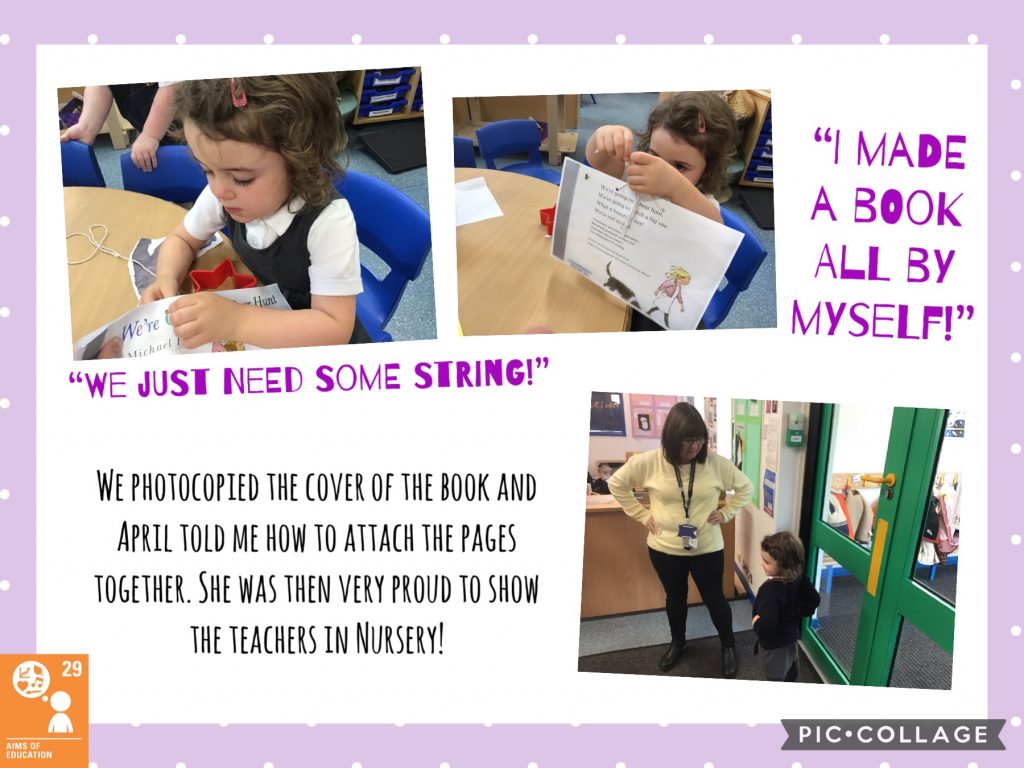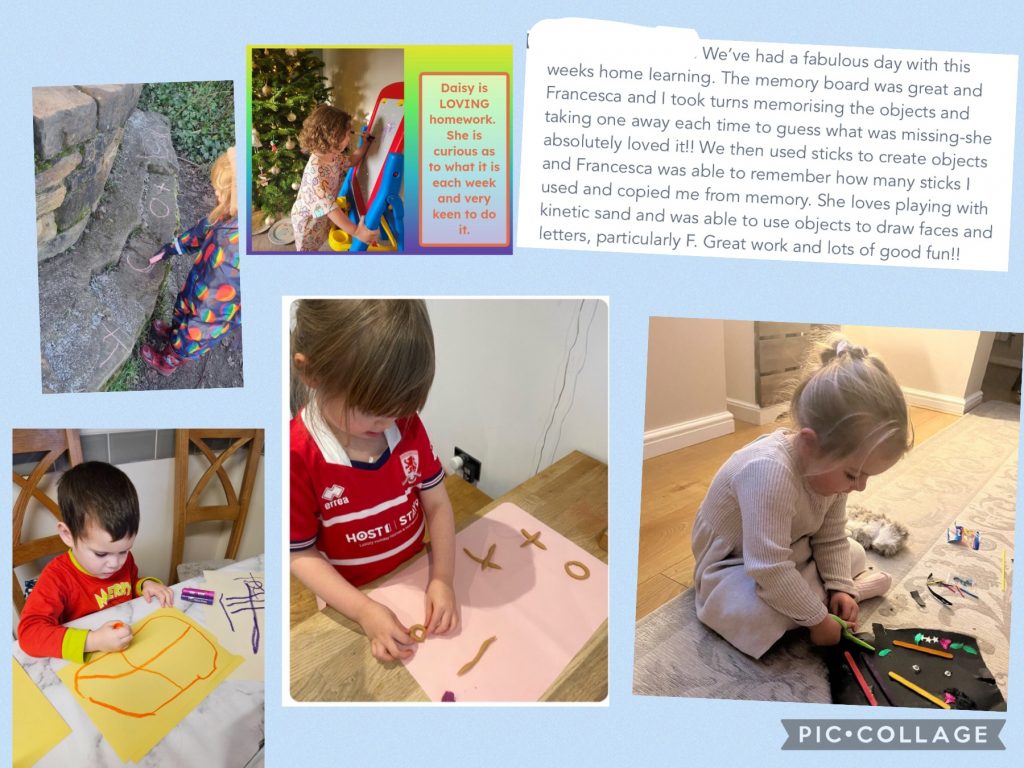Observational Assessment in Nursery
The Nursery curriculum is built around children’s interests and their emerging learning needs. Our response to these next steps in learning is reflected in each child’s learning journey observations, the classroom provision and the focus activities we prepare in school.
We use the children’s interests to develop our provision and this is often informed by the feedback we receive from parents and carers. When children join our setting, we gather information about interests and learning and staff use this information to prepare an inspiring and challenging learning environment.
We take observations of the children as they explore play in Nursery which we then upload to Seesaw each week. You will find evidence of staff playing and learning alongside children, responding to individual needs and moving learning forward during play.
Whilst staff are able to introduce new themes of play and extend ideas, it is equally important to us that each child understands that their ideas are valued and that our response to play celebrates the child’s creativity and approach to learning. We recognise that children are explorers and their play is a quest to achieve their individual goals.
Observations begin with a moment of reflection. Staff observe children initially and consider the best ways to facilitate learning. They capture photographs and comments to document the child’s start point and then negotiate play alongside the child to be able to extend learning. Children are seen to be masters of their craft and adults ask questions, and introduce problems for children to solve, in a way that encourages children to share their knowledge whilst boosting self-esteem. Staff present challenges for children to overcome and find ways for children to apply new skills to embed learning. Learning is collaborative and our EY team actively engage in child-initiated play to ensure that there are no missed opportunities. Whether a child wants to talk through an idea, seek access to resources or even if they want to showcase their talents and ask an adult to model their latest creation, we pride ourselves in knowing we are the first people they turn to.
We hope our interactions inspire your play and communication at home and that your child will enjoy sharing their achievements with you by looking through Seesaw. We use ‘Time to Talk’ stickers in some of our observations as prompts for discussion at home. We warmly welcome feedback from families in response to our Seesaw uploads and actively encourage children to explore this learning platform with their grown-ups.







Nursery Home Learning
Parent partnerships are an integral part of our practice at Barley Fields.
Each week, we share resources our families can use to develop key skills and to build on the activities we present during the school day. We recognise the benefit of developing skills across the curriculum to provide children with a toolkit for successful learning when they move into full-time school. You can expect to receive videos from staff, example questions and suggested activities to try at home.

We have developed our home learning offer to mirror our practice in school. Throughout the nursery school year, we introduce children to a range of stories to instil a love of books and to develop curiosity, imagination, discussion and engagement. We strive to be creative in finding resources and texts to underpin learning and to generate speaking and listening opportunities.
Supporting Videos
We also aim to develop children’s physical skills in preparation for early mark-making. Early Years staff understand that the writing process starts much sooner than the point where children put pencil to paper. We believe mark-making is a sensory journey that children need to be immersed in to accelerate the progress they make. Please refer to our ‘Flipper Flapper’ and ‘Squiggle while you Wiggle’ demonstrations below as examples of how we find ways to develop mark-making.
Flipper Flappers
We like to practise flipper flapper routines in Nursery to develop our gross motor movement. This routine challenges us to use our whole body so we develop an awareness of ourselves and how to coordinate our movements. Flipper flapper dancing also encourages us to use both sides of our body at the same time. We practise forming pre-handwriting shapes using our whole body. This helps to embed a visual memory of how to form each shape to support us with our mark-making skills.We like to practise flipper flapper routines in Nursery to develop our gross motor movement. This routine challenges us to use our whole body so we develop an awareness of ourselves and how to coordinate our movements. Flipper flapper dancing also encourages us to use both sides of our body at the same time. We practise forming pre-handwriting shapes using our whole body. This helps to embed a visual memory of how to form each shape to support us with our mark-making skills.
Squiggle While You Wiggle
We spend lots of time exploring pre-handwriting shapes in Nursery. This is one of the ways we prepare children for mark-making. We practise forming I – o + X \ / △▢before we explore letter formation. The movements required to form these shapes help us to write letters with accuracy, using the correct pencil movements. We like to explore squiggle using both hands to develop our bilateral movement.
Parent Feedback and Next Steps
Our families have the opportunity to share experiences and feedback from home on our online learning platform, Seesaw. We love taking inspiration from Seesaw and find that this can be a fantastic catalyst for learning in the classroom. Take a look at how Seesaw uploads from home can be used to develop play and interactions in Nursery.


Warning: Invalid argument supplied for foreach() in /home/sites/barleyfieldsprimaryschool.org.uk/public_html/wp-content/themes/mmd/page.php on line 23
